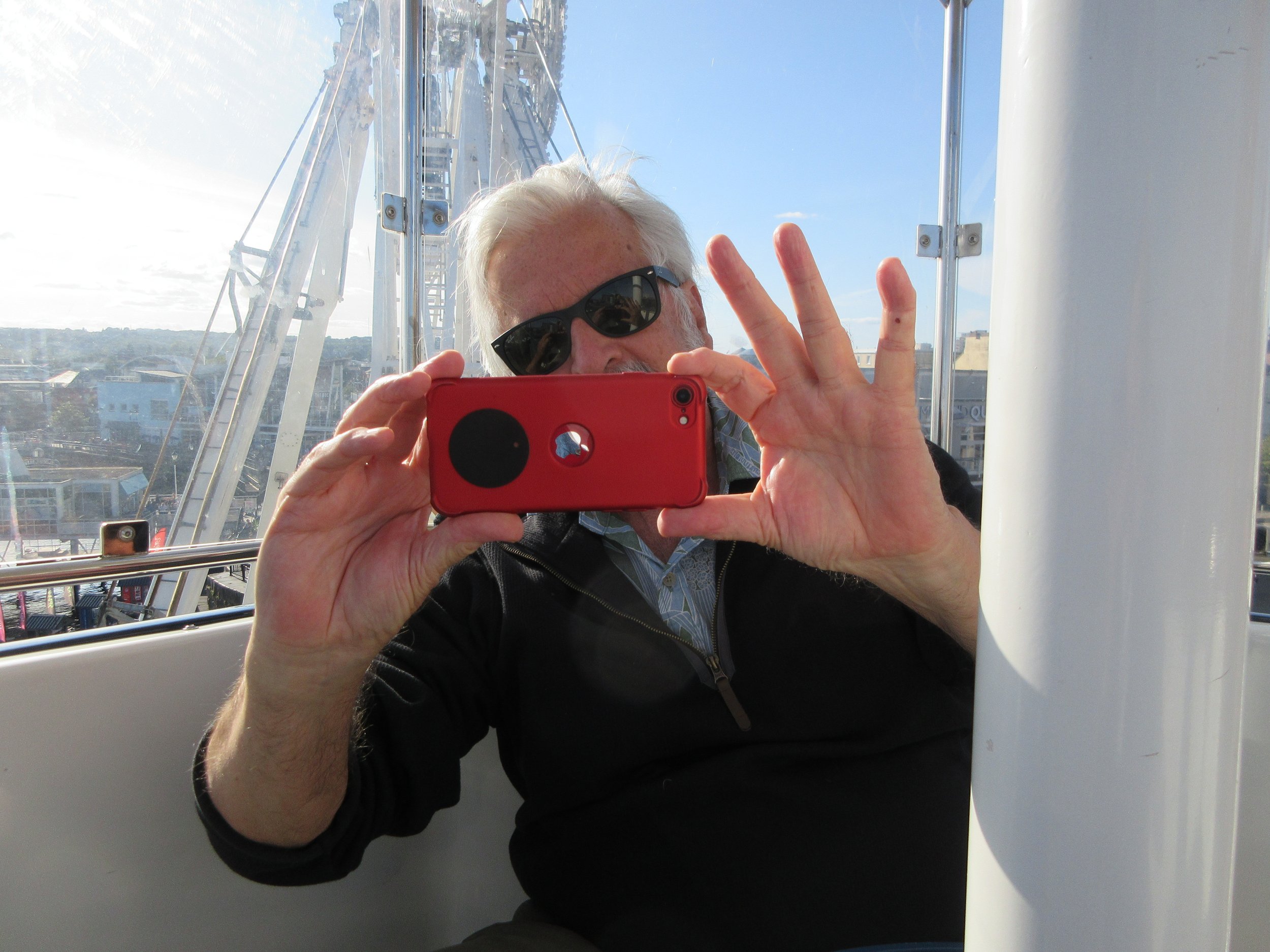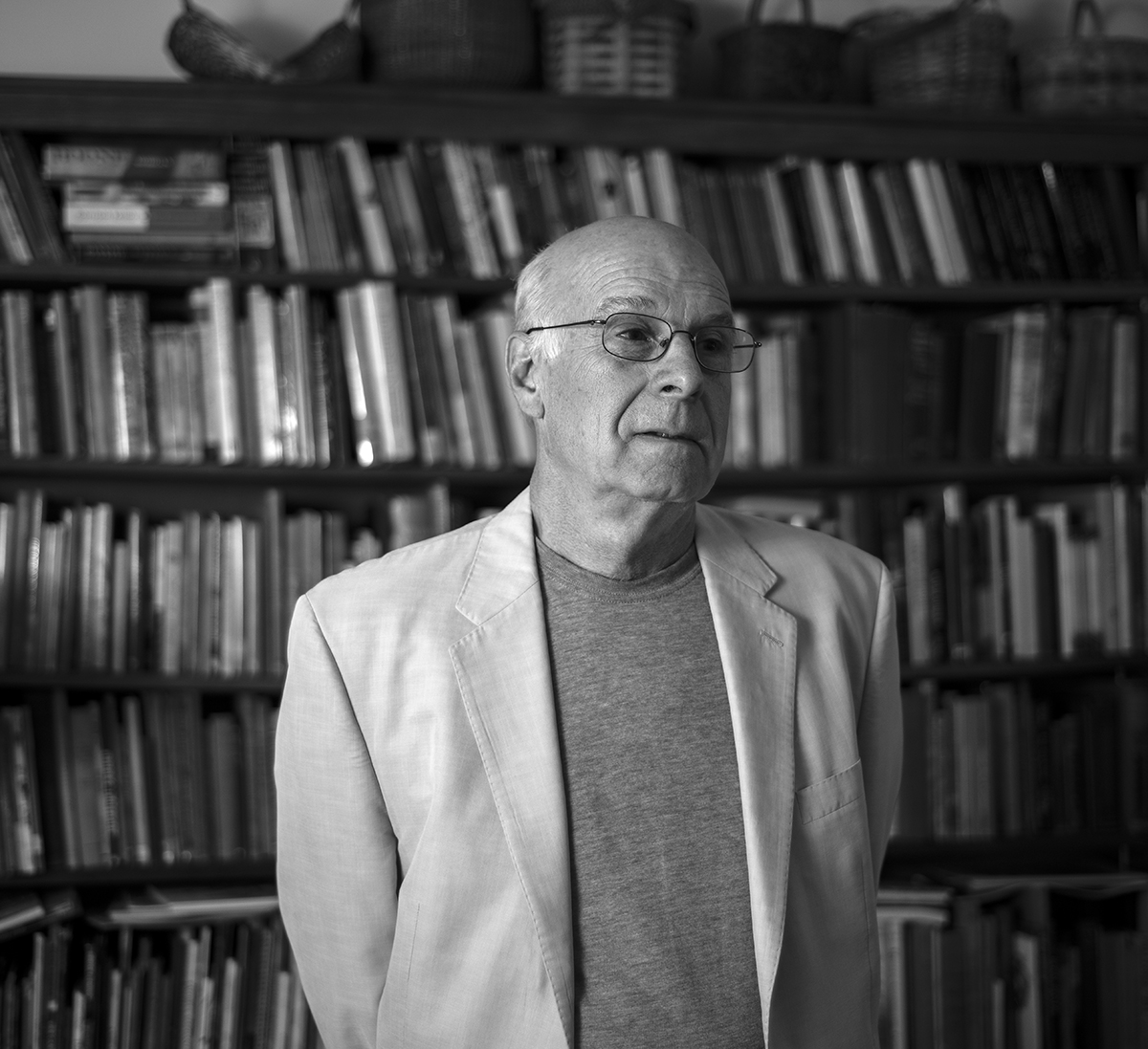Museums, Food & Funerals

Story and Photos by Russell Williams
A few years ago, when my wife and I retired here to the wonderful town of Lewisburg, we enjoyed the respite from the hectic world of Washington, D.C. And while we certainly enjoyed the fresh air and laid back vibe of our new life, the travel bug came calling pretty quickly. We would occasionally get what we affectionately called “The Lewisburg Blues,” and start searching the internet for a destination to feed our vagabond needs. This last fall, after two years of restricted travel due to Covid, the Lewisburg Blues manifested as thirty days in the United Kingdom. Even though our trip included visits to nine different cities, in the interest of time and space I wanted to share some thoughts on what has become our favorite city in the entire world—Edinburgh, Scotland.
After multi-day stops in Oxford and York, our rainy arrival into Edinburgh’s Haymarket Station is smooth, and our VRBO apartment is spacious and conveniently located in the West End neighborhood, near The Water of Leith Greenway and The Gallery of Modern Art. We spend most of our first afternoon planning our walks, museum visits, and restaurant explorations, almost all of which are within walking distance. One of the first eateries we try is Rodi Mediterranean, a Turkish restaurant near our apartment. Starters include humus and kisir, a spicy crushed wheat salad with cucumber, parsley, lemon, and pomegranate syrup, and then we enjoy chicken kabobs and an amazing vegetarian dish called Sebze Guvec, a sweet tomato sauce with onions, peppers, mushrooms, and garlic topped with melted goat cheese.
One of the main reasons I love to travel is you never know what you might learn, and through our travels in Scotland, we encounter a lot of history. At The Old Calton Burial Ground in downtown Edinburgh, we discover a monument to the American Civil War and the first statue of an American president completed outside the United States, which depicts Abraham Lincoln standing over a freed slave with the words “In Memory of Scottish-American Soldiers” inscribed at the base.
The Old Calton is also the final resting place of Peter Williamson, known as Indian Peter. Williamson, born to a poor Aberdeen family, was kidnapped as a child and sold into indentured servitude in North America. He was later captured by, and lived with, a marauding band of Native Americans. After escaping and making his way back to Scotland, he published an account of his life and sued the Aberdeen bailies, Scottish municipal magistrates, whom he thought complicit in his kidnapping. Later in life, Williamson toured Scotland dressed as a ‘Red Indian’ selling copies of his book, whose title says it all: ‘French and Indian Cruelty, exemplified in the Life and various Vicissitudes of Fortune of Peter Williamson, who was carried off from Aberdeen in his Infancy and sold as a slave in Pennsylvania.’
After visiting The Old Calton, we head up to The Collective, a center for contemporary art, housed in the restored City Observatory. Along with spectacular views, there’s an intriguing yet odd animated presentation depicting Andrew Carnegie, a Scottish industrialist, discussing his legacy with a cartoon Brontosaurus. You gotta love contemporary art.
If you know my wife and her collection of typewriters, then you know we were not going to miss the final days of the Typewriter Revolution exhibit at our next stop of the day, The National Museum of Scotland. While here, we are also able to hear the pealing of the Millennium Clock Tower at the start of the noon hour, something also not to be missed.
As it rains, we then take a short walk to Cafe Andaluz, where we share an array of delights and the best meal yet: an asparagus, artichoke, and tomato salad with a sweet hinamin dressing; layers of sliced potato baked with garlic cream and mozzarella cheese; hot roasted king prawns in olive oil with chili, paprika, and garlic; and pan fried chicken marinated in paprika, lemon, and coriander served with chili yoghurt.
After lunch, we begin a long, rain-free walk to The National Portrait Gallery. Much like the United States’ National Portrait Gallery, this magnificent museum depicts local, regional, and national history and contemporary life through portraits and photographs of individuals from throughout the ages. The world’s first purpose-built portrait gallery, this impressive building was designed as a shrine for Scotland’s heroes and heroines and constructed in 1889.
That evening, while we await our dinner order in a pub, the announcement of Queen Elizabeth’s death plays over the TV. Interestingly, there’s not much reaction, but we do notice the streets are uncharacteristically empty. While we walk back to the apartment, all the TVs in the neighborhood are tuned to the news, as folks must be staying in and absorbing the new reality; seventy years on the throne will not be repeated.
Next morning, we take in a short visit to The National Gallery of Modern Art where we explore a few of the galleries and the grounds, including The Water of Leith Greenway that passes the entrance. It’s a magical way to stroll, traffic free, through the heart of Edinburgh and by far my favorite part of the Edinburgh experience. We also take a short part of the walk to the incredibly photogenic Dean Village, and we eat lunch at Leith’s Original Fishers, a premier seafood restaurant built into in a seventeenth century watchtower, but despite the history and location, the food isn’t quite interesting enough to warrant a return visit. To finish the day, we experience a great way to see the city by riding on the top deck of a bus.
Now it’s Saturday, September 10th, and for us, a very good day. First up is a walk into town to check out preparations for the arrival of the Queen’s funeral cortege. It’s amazing how quickly the City of Edinburgh mobilizes for the event, and we walk the blocked off route unencumbered all the way from St. Giles Cathedral to the Queen’s residence at Holyrood where, through the kindness of a uniformed officer, we’re directed to the little used Northgate. There we visit the main site for leaving flowers and watch the honor guard rehearse their most important performance. I’m also able to watch the armored procession cars unload—no pictures please—from the enclosed 18-wheelers they travel in.
Later, we find our way to Cowgate Street, which parallels the Royal Mile, and come upon the very small, one room Magdalen Chapel, where Annamarie lights candles for the Queen. The docent has just opened the door, and we are treated to his first, very informative walk-thru of the day. Visiting with someone so knowledgeable about his charge is a moving experience; we learn the chapel has been in constant use ever since it was constructed in the 1540s, and it was originally built to house not only a chaplain but also as an almshouse for seven ‘Bedesmen,’ poor men “who should continually pour forth prayers to Almighty God.” Originally sponsored and built by the Union of Hammermen, the Union still partakes in community work today.
Just down the road, we enter Grassmarket Square, one of the oldest parts of the city. The name stems from the animal pens originally located at the west end of the open square, where today one of the finest farmers markets in the city is held. The paella vendor alone is worth the visit. Across the square is The White Hart Inn; established in 1516, it’s said to be the oldest constantly operating public house in the nation—as well as one of Scotland’s most haunted buildings. There are scores of pictures and accounts of hauntings found at the Inn, as well as a cold pint and a fine array of single malts.
This afternoon we head back downtown to The Scottish National Gallery to view their fabulous current presentation, ‘A Taste for Impressionism and Modern French Art from Millet to Matisse,’ and I’m particularly impressed by the bright colors the museum has chosen to display the featured paintings on; I find the backgrounds of vibrant color enhance the experience dramatically. There’s also an interesting subtext to the exposition dealing with forgery, which was quite prevalent in the nineteenth century art world. Lastly, a Van Gogh self-portrait that was recently discovered on the back of another painting’s canvas is currently on display at the gallery.
Tonight we have reservations at one of our favorite Edinburgh restaurants, The Outsider. Our mood is hampered when we arrive early and are seated in their loft facing a wall, but our energetic waiter carries the day. They’re unfortunately short staffed, but my baked hake with mussels, broccoli, chili, and new potato with lime beurre blanc was delicious, served hot from the backed-up kitchen. Annamarie’s whole sole meunière with capers, sautéed new potato with smoked almonds and sauce vierge was equally delicious, and I cautiously admire her de-boning skills.
Sunday the 11th dawns sunny and beautiful, so we decide to visit The Royal Botanic Garden, a seventy-acre collection of plants from around the world that is without a doubt the most extensive I’ve experienced. These gardens are a marvel and certainly a highlight of our visit. We decide to bus back to George Street for lunch and a bit of shopping, but after about 20 minutes, no bus has been by—unusual for this busy city—and we start walking instead. Eventually we come to the corner of Princess and Lothian streets to find it blocked by hundreds of people crowded across both roads. Anticipating perhaps the zombie apocalypse, a car accident, or worse (it’s quite near the Edinburgh gin distillery), we detour around St Cuthbert’s cemetery on to Castle Terrace, where both sides of the street are completely lined with folks. Thinking it might be a backdoor route for King Charles to get to Holyrood, we wait it out, hoping for a sighting; we have no idea it’s the Queen’s funeral cortege until it passes. Even I tear up when I see the casket in the clear domed hearse. The crowd is mostly silent as the Queen travels the last mile to her beloved Scottish home, and then they gently clap. It’s fitting that our last night in our favorite city is spent watching the Queen’s favorite movie, Paddington Bear. It’s now our favorite as well.
If you are interested in following the rest of the trip, which included extended stays in Oxford, York, Chester, Cardiff, Bath, Stratford-Upon-Avon and The Cotswold, visit my blog at http://lewisburgblues.blogspot.com.
After thirty days, I’m very happy to be home. Two years of no foreign travel was challenging, and I thought a month in Britain would be nirvana. It was in a way, but being abroad, at least in the UK, is not so different. What bugs you at home will be just as annoying overseas, and you still need to make your own fun. I am fortunate to have someone with whom to share all the wonderful moments experienced on the road. That she still finds me occasionally amusing is a miracle. All said, I am happy to see my friends, my wonderful small town, and my cat. Not necessarily in that order.
Travel well… and gentlemen, please wear long pants.






